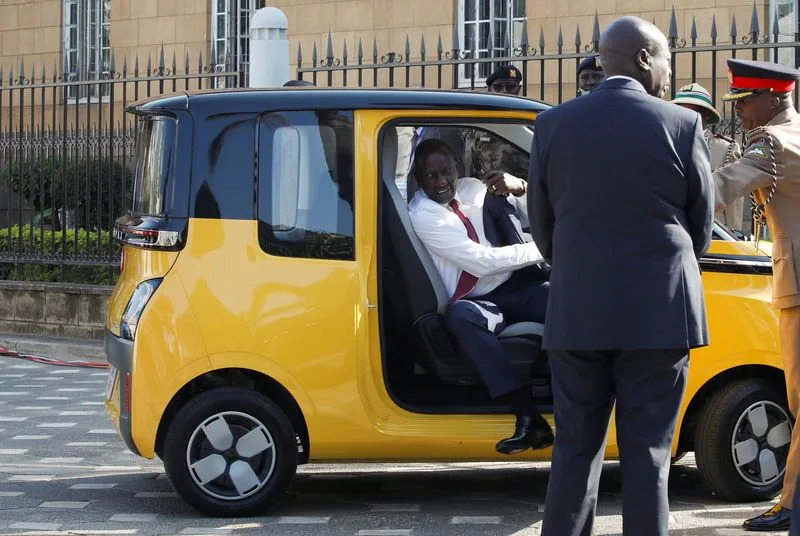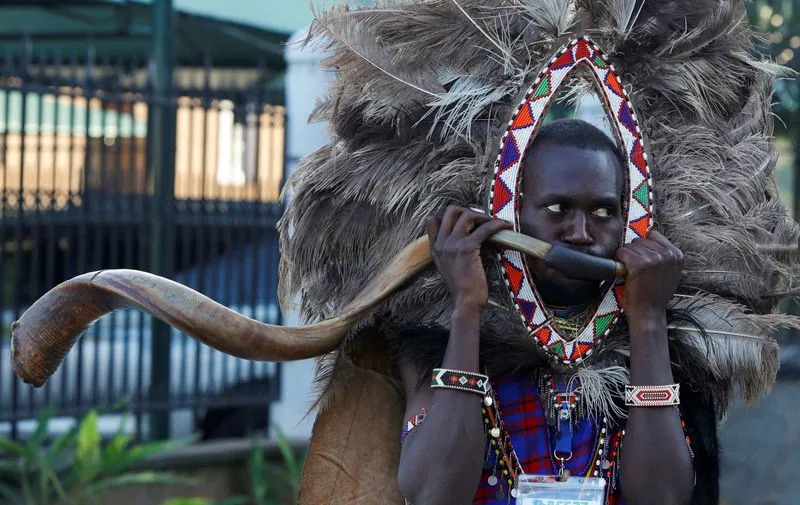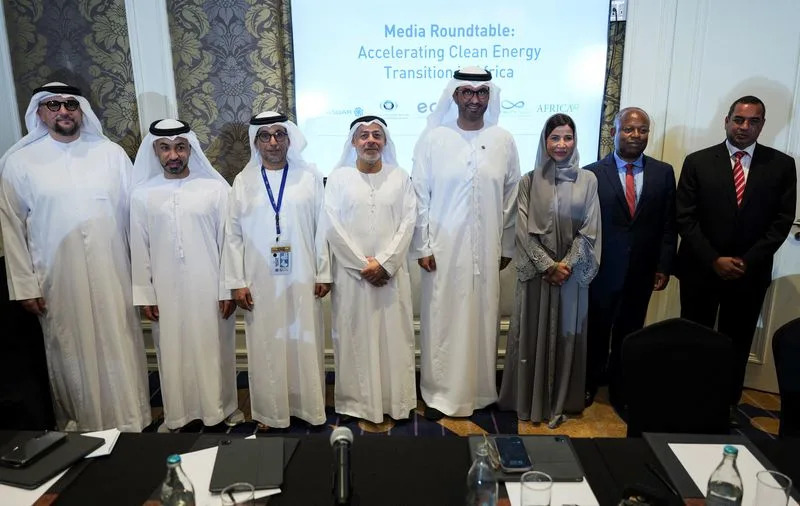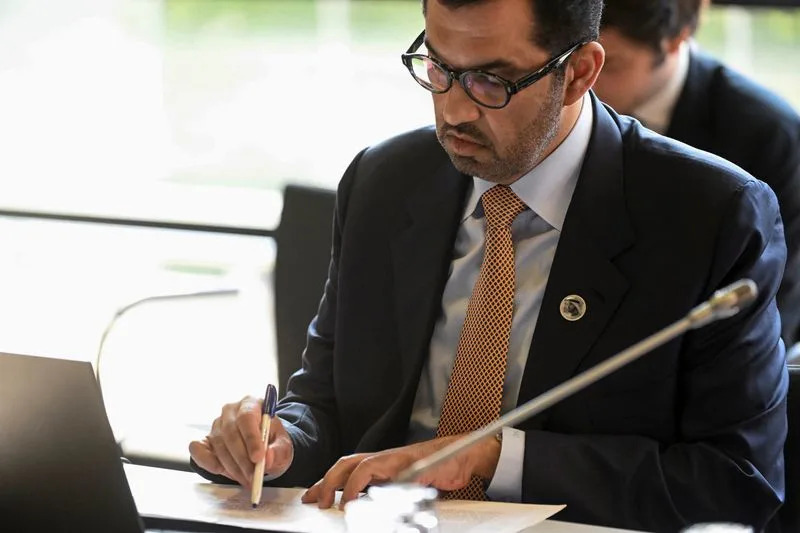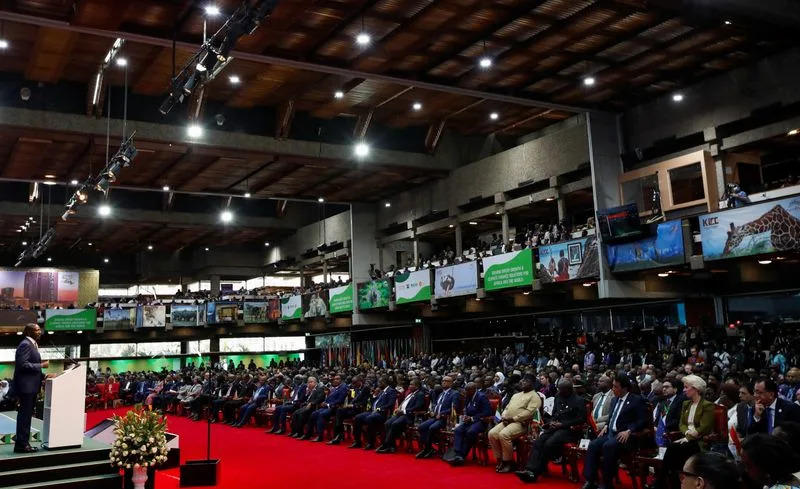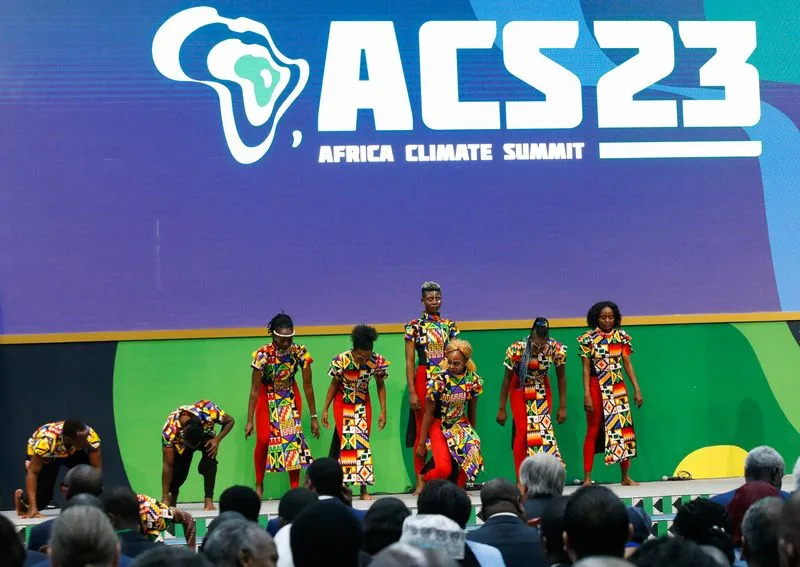AFP
Thu, September 7, 2023
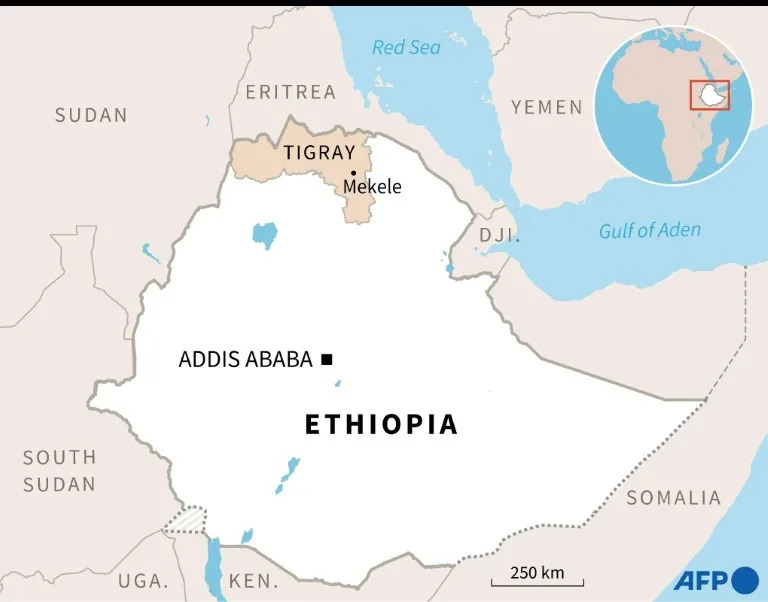
Tigray is emerging from a two-year war that pitched Ethiopia's federal armed forces against the region's TPLF party (Aude GENET)
Police in Ethiopia's war-scarred region of Tigray arrested and baton-charged opposition leaders and supporters ahead of planned demonstrations on Thursday, a protest organiser and a local journalist said.
A coalition of three opposition parties had called for demonstrations against the region's interim administration led by the Tigray People's Liberation Front (TPLF), which dominated Ethiopian politics for nearly three decades until 2018.
Hailu Kebede, a senior official in the Salsay Weyane Tigray (SaWeT) party, told AFP that security forces had "dispersed the demo with... beatings and arrests."
He said police had taken at least 26 people into custody since Wednesday, including Hayalu Godefay, the head of SaWeT, and Dejen Mezgebe, the president of the Tigray Independence Party (TIP).
The two men had been detained for a day on Tuesday as they urged people to come out in protest against "the incompetence" and "autocratic character" of the TPLF.
A local journalist told AFP on condition of anonymity that security forces had "totally cordoned off" Romanat Square, the location of Thursday's planned rally in Tigray's capital Mekele.
"I saw them beating demonstrators who were attempting to enter the square," he said, corroborating Hailu's account of the arrests.
"All roads leading to Mekele have been closed and people are unable to move. The businesses in central Mekele have also remained closed and the streets are empty," he added.
The political challenge to the TPLF comes as the region emerges from a bloody two-year war between the party and Ethiopia's federal government.
In November 2022, the TPLF and the federal government signed a peace deal that brought the curtain down on a conflict that inflicted a huge toll in lives and damage.
Authorities in Mekele had refused to authorise the demonstrations, citing the lack of available police officers in the run-up to the Ethiopian New Year on Tuesday.
But the opposition has insisted that it does not need authorisation to hold a peaceful demonstration.
Getachew Reda, the head of Tigray's interim government, told state media on Wednesday that opposition parties could not decide "the time...and place" of protests.
"We didn't say the rally shouldn't happen, we said the circumstances are not met (for) the rally to happen tomorrow," he said, citing security fears.
Tigray suffered from dire shortages of essential supplies during the conflict.
Since the peace deal, some basic services have resumed to the region, but media access remains restricted and it is impossible to independently verify the situation on the ground.
ayv/amu/txw/ri
Ethiopia’s Amhara people are being portrayed as the enemy: the dangerous history of ethnic politics
Yirga Gelaw Woldeyes, Senior Lecturer, Curtin University
Thu, September 7, 2023
The Ethiopian government declared a state of emergency on 4 August 2023 and sent the military into the Amhara region to engage the Fano, a local armed militia. Some suggested that Ethiopia risked slipping into another civil war.
It is only 10 months since the end of a civil war in which around 600,000 Ethiopians were killed, making it the deadliest war of the 21st century.
The conflict was mainly between the federal government, led by the Oromo-dominated Prosperity Party, and the Tigray People’s Liberation Front (TPLF), the party it succeeded in 2018. When the TPLF entered the Amhara region, committing atrocities against civilians and taking over towns, the Fano worked with government forces to maintain local stability. With their support, Prime Minister Abiy Ahmed was able to push the TPLF back to Tigray.
During and after the war, massacres and mass displacement of Amhara occurred in the Oromia region, the Benshangul Gumuz region and other regions of Ethiopia. There were numerous reports of rapes, arbitrary arrests, abductions, forced evictions and people being burned alive.
One independent account reported that Orthodox Christians, seen as synonymous with Amhara, were chopped with machetes, stabbed with spears, cut down with scythes, beaten with bats and stoned to death.
A peace agreement between the TPLF and the government in November 2022 brought relative calm to Tigray and other regions. But the Amhara were left out of the agreement and continue to be targeted even by government forces.
This is the context in which Amhara’s Fano militia rejected the federal government order to surrender their weapons and be integrated into the police and federal army.
The government response was to bombard Amhara towns with drones and heavy artillery. There have also been mass arrests and detentions of Amhara leaders.
I am a scholar of history, human rights and decolonisation in Africa with a keen interest in Ethiopia. The rhetoric that presents the Amhara people as a national enemy has gone on, unchallenged, for almost 50 years. What has changed now is that the rhetoric has shifted towards widespread, government-sanctioned violence.
Article 2 of the UN Genocide Convention defines genocide as acts “committed with intent to destroy, in whole or in part, a national, ethnical, racial or religious group”. Following widespread attacks on Amharas in 2021, the Ethiopian Human Rights Commission warned of “the risk of atrocity crimes, including genocide”. In February 2023, a US-based charity focused on genocide prevention reported that “all Oromia armed forces are conducting what appears to be a systematic policy of erasing the Amhara presence” in two administrative zones.
It is important to shine a light on what is happening and unpack the decades-long project of ethnic politics that has allowed the Amhara to be targeted.
The history of ethnic politics in Ethiopia
Ethiopia has a long history of ethnic harmony. Historically, Ethiopian rulers came from different regions and were often of mixed lineage. For instance, King Menelik II (1844-1913) came from Amhara and Oromo ancestry. King Yohannes IV (1837-1889) was from Tigray. The Oromo king Mikael (1850-1918) ruled over the Amhara region of Wollo. His son, King Eyasu, inherited Menelik’s throne.
The last monarch, Emperor Haile Selassie, had Amhara and Oromo parents, as does Abiy himself. Until recently, mixing among ethnic groups wasn’t considered controversial. Indeed, it was Ethiopia’s ability to unite across ethnic, linguistic and religious boundaries that defeated Italy’s attempt at colonisation at the Battle of Adwa in 1896.
When the fascist Italian prime minister Benito Mussolini invaded and occupied Ethiopia from 1935 to 1942 dividing the country along ethnic lines took centre stage. It was carried out along plans devised earlier by the Austrian Nazi Roman Prochazka to portray the Amhara as the enemy of all other ethnic groups.
After the expulsion of Italy, Haile Selassie sent Ethiopians from diverse ethnic groups overseas for higher education. During the 1960s decade of revolutions, students formed the Ethiopian Student Movement to remove the monarchy. Two ideological positions of nation building emerged:
The first viewed the monarchy as a class-based feudal system that should be destroyed. It saw ethnic politics as a hindrance to achieving a socialist republic.
The second adopted the Stalinist approach that defined cultural and linguistic groups within a country as nations. They saw the monarchy as an ethnic-based, colonial power.
Members from the first group created an alliance with the Derg, a committee of military officers, which overthrew Haile Selassie in 1974 but refused to create a civilian government. It ruled through dictatorship, destroying the monarchy and anyone who opposed its power.
The student groups who viewed the monarchy as an ethnic-based colonial power formed the Eritrean People’s Liberation Front and the Tigray People’s Liberation Front. The two combined, organised other ethnic allies, and removed the Derg from power in 1991. The TPLF led a transitional government which approved the secession of Eritrea from Ethiopia and the adoption of the current constitution.
This set the stage for 27 years of autocratic rule in which the Amhara were cast as the oppressor of all ethnic groups and the TPLF placed itself at the centre of the liberation of all Ethiopians.
The Amhara as national enemy
Ethiopia’s 80-plus ethnolinguistic communities were framed as sovereign “nations” under the 1995 constitution ostensibly to rectify “historically unjust relationships”.
Although the Ethiopian monarchy was established in Tigray and many Tigrayan (and, indeed, Oromo, Amhara and mixed) emperors ruled the country, the TPLF singled out the Amhara as the monarchical oppressor of all ethnic nations. This was partly convenient because Ethiopian emperors, regardless of ethnic origin, used Amharic as the language of their court.
Ethnic politics was enshrined in law. Once the TPLF came to power, all citizens were required to have ID cards stating their ethnicity. Individuals from mixed backgrounds must choose an ethnic identity. Regional states created their own constitutions, borders, flags and anthems. As Ethiopian historian Yohannes Gedamu notes, many constitutions state that “the ownership of the region” is based on ethnicity, resulting in cases where
the Amharas in various regional states are now considered settlers in their own country.
The Amharic speaking people of the Amhara region and beyond have lived in Ethiopia for thousands of years, as evidenced by the millions of manuscripts written in their ancient language of Ge’ez, which is the basis of Amharic and Tigrinya. Their almost millennium-old rock churches, imbued with Ethiopian Orthodox architecture and artwork, speak to the Amhara’s ongoing connection to the land.
Labelling an indigenous group of people as “settlers” allows those perpetrating violence to co-opt the language of decolonisation to justify murder. The Amhara are labelled as neftegna, which means a monarchical soldier, despite the monarchy being an institution led by kings from mixed ethnic groups.
Even if one believes that the Amhara were monarchical oppressors, the monarchy was destroyed almost 50 years ago and the Amhara have been excluded from power ever since. The thesis that they are oppressors does not correlate with reality.
Heading towards genocide
The federal government has strengthened its ties to its former enemy, the TPLF. The defence minister, Abraham Belay, announced that the Ethiopian army would dismantle the Amhara administration in Wolkaite, a contested region between Tigray and Amhara.
In August 2023, Oromia state government representatives travelled to Tigray to declare war:
The war we just started [on the Amhara] is a major war. Right now, this group we are fighting wants to impose one religion, one country, and one language by force on all of us. We have reached the moment that Tigrayans and Oromos must join forces, along other Ethiopians, to defeat this force so that Ethiopia can prosper.
In fact, Amhara has no power to do that.
Ethiopia can draw a lesson from Rwanda. Similar demonisation of the Tutsi by Hutu genocide agitators led to genocide 30 years ago in which 800,000 Tutsis and Tutsi sympathisers were killed. The Tutsi were described as foreigners who had links with long-dead Belgian colonialism. ID cards listing ethnicity were used to identify the victims.
Since the demonisation of the Amhara has been built into constitutions, government policy and dehumanising nation-building rhetoric, it has filtered down to people who previously lived together in harmony.
This is the consequence of ethnic politics in Ethiopia. Without more attention and action from the media and global actors, Ethiopia could be heading towards a Rwandan-style genocide.
This article is republished from The Conversation, a nonprofit news site dedicated to sharing ideas from academic experts
It was written by: Yirga Gelaw Woldeyes, Curtin University.
Read more:
Landlocked Ethiopia wants better sea access: a port deal with neighbours could benefit the region
Ethiopia’s Amhara crisis: Abiy’s political failures threaten a return to war
Egypt and Ethiopia are finally working on a water deal – what that means for other Nile River states
